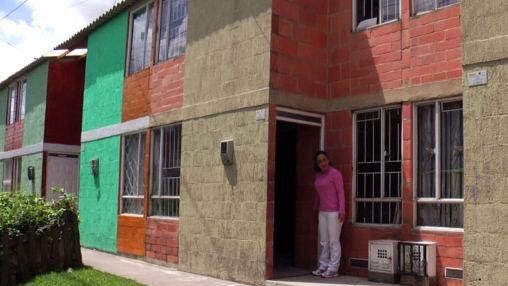Challenge
Natural hazards are a challenge to sustainable development in Colombia. In the past 30 years, Colombia has suffered from six major earthquakes, four volcanic eruptions, annual major landslides, and recurrent extensive flooding. Historical records indicate that 80 percent of damages and losses generated by natural disasters can be associated to inadequate land use management and 20 percent to insufficient housing standards.
Over the last 40 years, natural disasters in the country have produced losses that amount to US$7.1 billion. Over the last three decades close to 10,000 people have died and more than 14 million people have been affected from recurrent small scale disasters like flooding and landslides. The La Niña floods of 2010-2011 affected 3.5 million people. The vast majority of these people were from the lowest income quintiles. Damages and losses from the wide scale flooding amounted to 25 percent of the previous decade’s totals, one-third of reported deaths and affected persons, and approximately 50 percent of houses damaged.
A notable rise in the number of reported disasters in Colombia is to a large extent due to an increase in vulnerability due to insufficiently planned urban growth, inadequate environmental management and land use planning, and lax application of building codes, and possibly in part due to climatic trends.
Solution
The World Bank has developed a broader partnership with the Government of Colombia on disaster risk management dating back to the late 1990s. This partnership contains an integrated programmatic engagement on disaster risk management, demonstrated through a dynamic and expanding portfolio of financial, knowledge and convening services.
The Bank’s engagement has evolved from one primarily focused on disaster recovery to now encompassing three pillars: (a) understanding of disaster risk, (b) implementation of risk reduction activities, and (c) disaster risk financing and insurance. The Bank’s engagement over the medium term will focus on: the modernization of the national disaster risk management system; improvements in the application of disaster risk analysis and management in policy making at the sectoral and territorial levels; and strengthening disaster risk management at subnational levels.
Results
World Bank projects have contributed to strengthen the capacity of the national Government to coordinate disaster risk management, to build capacity at municipal level, and to reduce disaster risk. An initial focus at the subnational level has focused on city governments from five of Colombia’s largest cities encompassing institutional arrangements for DRM, risk management in territorial planning, settlements in high-risk areas, monitoring and early warning systems, and information systems for risk management.
Additionally, the Bank has reduced the financial vulnerability of the regions to disasters triggered by natural events by improving their financial response capacity in the aftermath of disasters while protecting their long-term fiscal balance through innovative financial insurance products.
Following the 2010-2011 national flooding, the World Bank led the preparation of the Colombia Country Disaster Risk Management Analysis (CCDRMA). This first of its kind national level analysis (i) established risk exposure and impact of disasters in recent decades, (ii) identified legal, institutional, and conceptual advances in risk management, (iii) reviewed at regional and local levels the status and development of investment in risk management and the inclusion of the hazard and risk in the land use planning, (iv) analyzed the role of sectoral authorities, and (v) identified gaps and challenges in defining the responsibilities of the public and private sectors.
